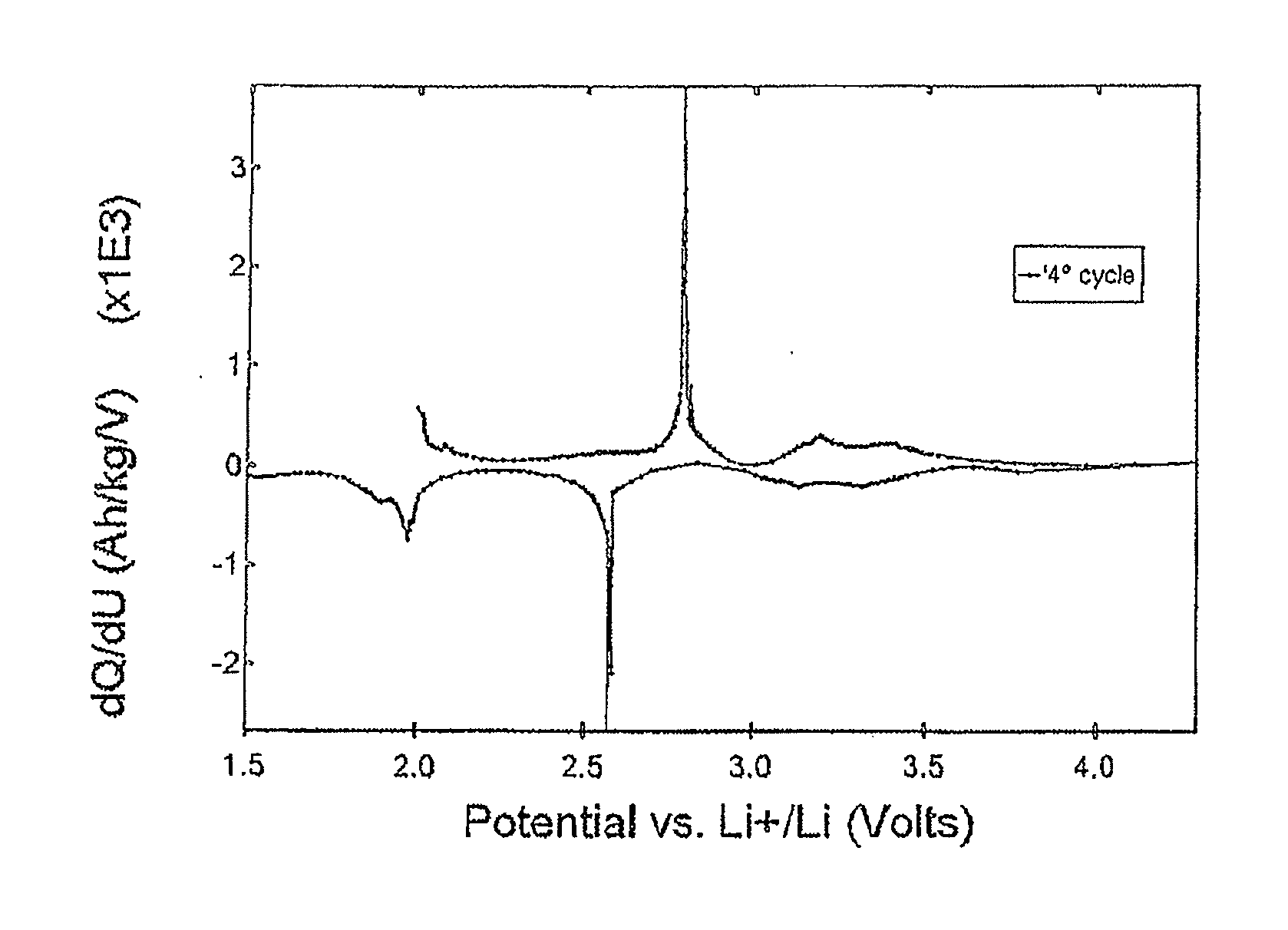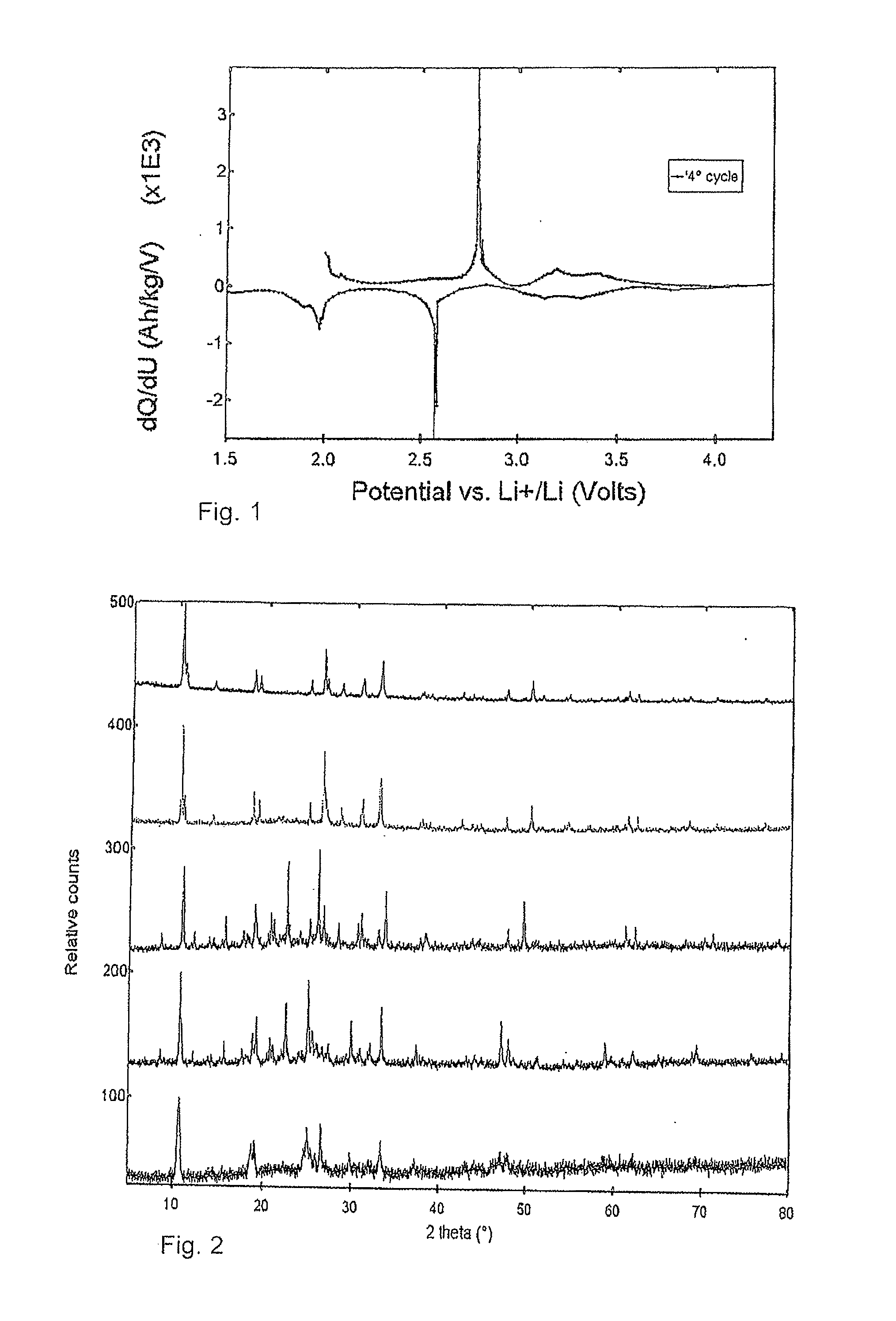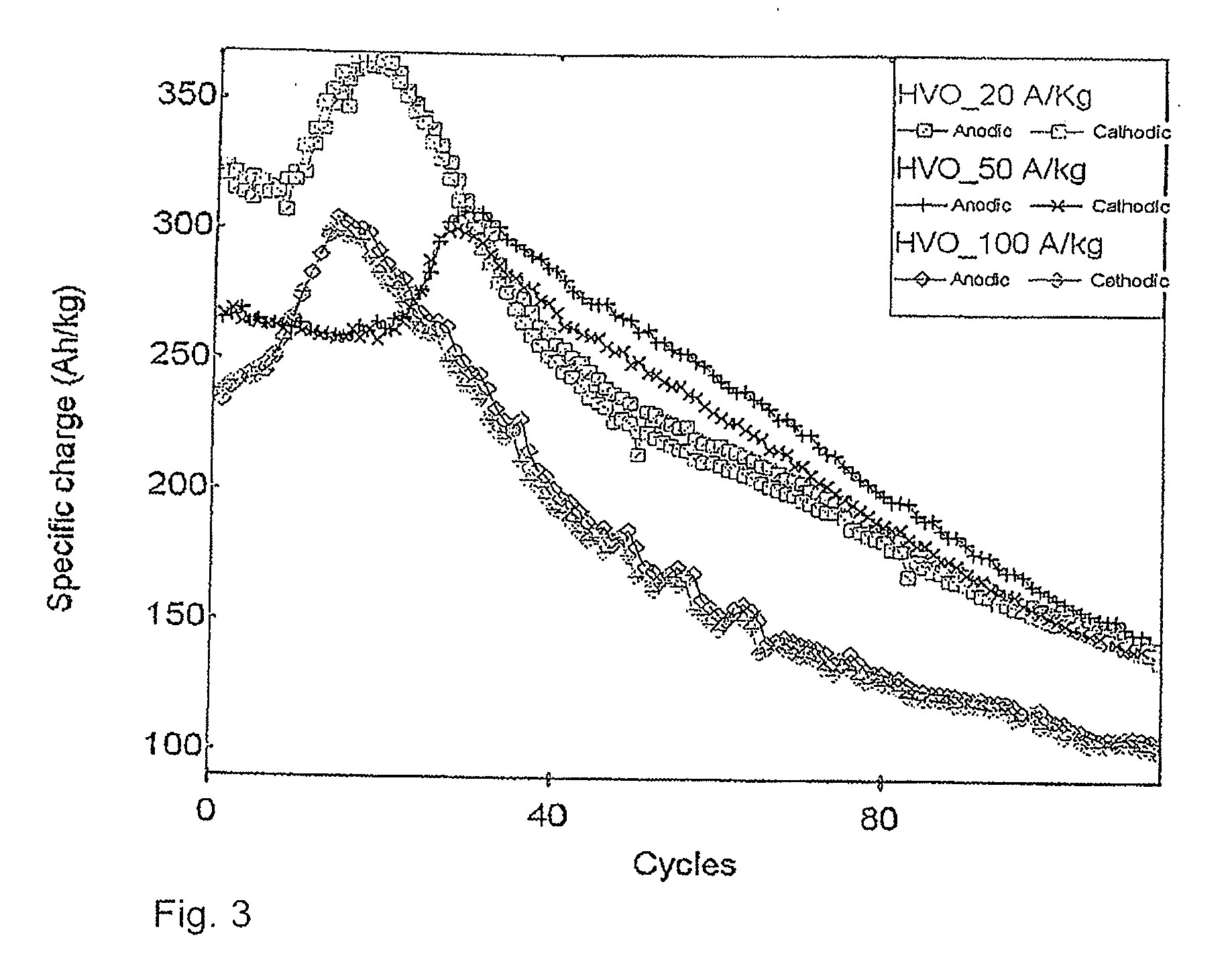Electrode (anode and cathode) performance enhancement by composite formation with graphene oxide
- Summary
- Abstract
- Description
- Claims
- Application Information
AI Technical Summary
Benefits of technology
Problems solved by technology
Method used
Image
Examples
example 1
Synthesis of H2V3O8
[0118]First Method:
[0119]200 ml of a 0.06 M aqueous solution of vanadium (IV), such as vanadyl chloride pentahydrate, and 200 ml of distilled water were put in a 800 ml Teflon® inlet. The inlet was then transferred to a steel autoclave and placed in an oven which was previously preheated to 220° C. A magnetic stirrer (80 rpm) warranted the homogeneity of the solution. The temperature was kept constant for 12 hours. After removal of the autoclave out of the oven and cooling under ambient conditions, the green to green-yellow solid product was filtered, washed 2 times with distilled water and one times with isopropanol and dried in air at 120° C. for 3 hours. 450 to 550 mg substance were obtained this way.
[0120]A vanadyl chloride solution suitable for being used as starting material in the above reaction was prepared by quantitative precipitation of the sulfate out of a vanadyl sulfate solution with barium chloride. After filtration with micronize filter (0.22 μm p...
example 2a
Self-Assembly, Lithiation and Carbonization
[0124]0.68 mg (0.0071 mmol) lithium lactate, 0.8 mg (0.0049 mmol) vanadyl sulfate and 0.3 mg (0.0125 mmol) lithium hydroxide were dissolved in 0.5 ml distilled water in a 10 ml tightly closeable test tube. 1.5 ml graphene oxide (GO) solution (prepared according to Example 3) was then added and the test tube was gently shaken in order to obtain a bright brownish clear solution. 20 mg (0.0707 mmol) H2V3O8 were dispersed in the solution, the test tube sealed and the resulting suspension homogenized through ultrasound and vigorous shaking. Once homogenization was completed, the test tube containing a green suspension was put in an oven and kept at 150° C. for 1.5 h. During this hydrothermal step, the pressure inside the vessel increased to approx. 3-4 bar while lithiation, self-assembly and thermolysis of GO to graphene took place. The suspension changed into a black liquid with a dense (dark blue) solid floating in it. At the end of the hydrot...
example 2b
Self-Assembly, Lithiation and Carbonization
[0125]Chemicals
[0126]The following chemicals were used: 20 mg H2V3O8, 150 mg VOSO4.5H2O, 60 mg lithium lactate, 5 ml graphite oxide (GO) solution (0.5 g / l), 5 ml distilled water, 60 mg LiOH.H2O
[0127]Equipment
[0128]The following equipment was needed: 1 paper filter, 1 ceramic funnel filter, 1 20 ml beaker and 1 magnetic stirrer
[0129]Electrode Preparation
[0130]The vanadyl sulfate was dissolved in water in a beaker with magnetic stirrer. H2V3O8 was added and dispersed shortly through ultrasonication and stirring. GO solution (prepared according to Example 3) was added dropwise while stirring. The mixture was left for 30 minutes with stirring and then the suspension was frozen. The time during which the suspension was kept in a frozen state is uncritical. It may be warmed up as soon as it has reached the fully frozen status. Once the suspension had warmed up again to room temperature (RT) and stirring worked again, lithium lactate was added and...
PUM
| Property | Measurement | Unit |
|---|---|---|
| Temperature | aaaaa | aaaaa |
| Temperature | aaaaa | aaaaa |
| Temperature | aaaaa | aaaaa |
Abstract
Description
Claims
Application Information
 Login to View More
Login to View More - R&D
- Intellectual Property
- Life Sciences
- Materials
- Tech Scout
- Unparalleled Data Quality
- Higher Quality Content
- 60% Fewer Hallucinations
Browse by: Latest US Patents, China's latest patents, Technical Efficacy Thesaurus, Application Domain, Technology Topic, Popular Technical Reports.
© 2025 PatSnap. All rights reserved.Legal|Privacy policy|Modern Slavery Act Transparency Statement|Sitemap|About US| Contact US: help@patsnap.com



